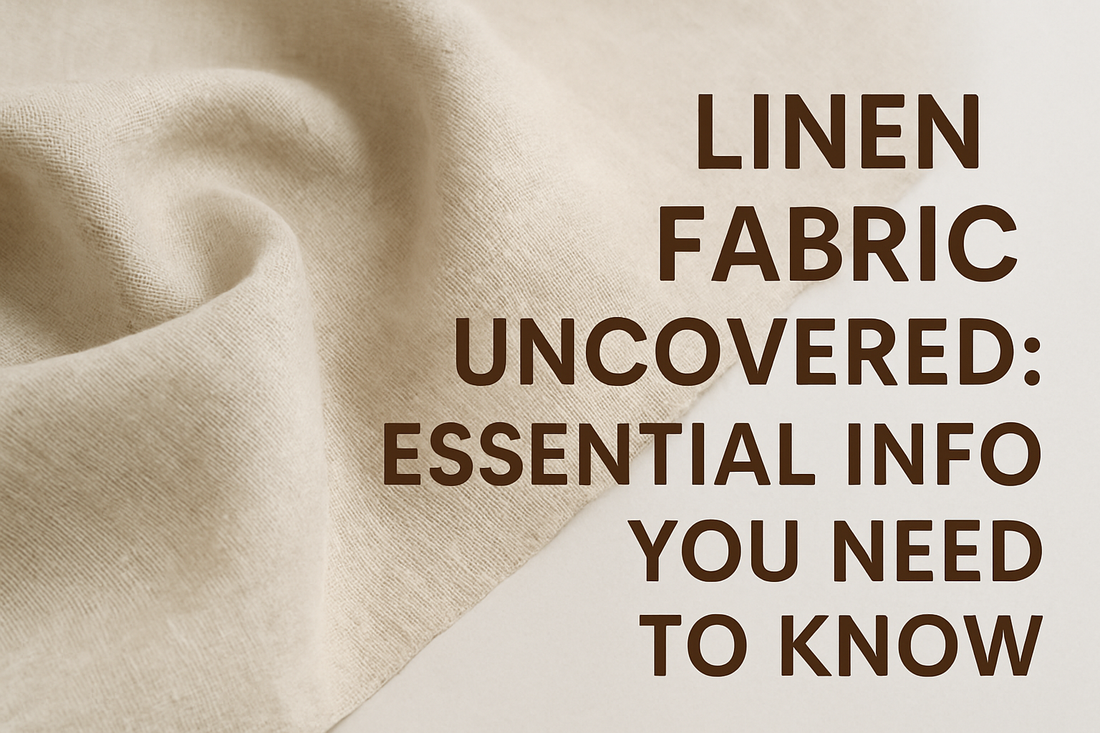The Rich Heritage of Linen Fabric
Linen fabric boasts an illustrious legacy spanning thousands of years, establishing itself as one of humanity's earliest textile innovations. Derived from the flax plant (Linum usitatissimum), this remarkable material has adorned pharaohs, emperors, and everyday citizens throughout the ages. The cultivation of flax for linen production dates back to approximately 8000 BCE in Mesopotamia, making it a textile with profound historical significance. Ancient Egyptians, renowned for their textile mastery, considered linen sacred—reserving the finest weaves for religious ceremonies and mummification processes. The pristine white fabric symbolized purity and divine connection, while simultaneously providing practical comfort in scorching desert climates.
From Ancient Origins to Modern Runways
The journey of linen from ancient staple to contemporary fashion darling represents one of the most enduring material narratives in human history. While Egyptian nobility wrapped themselves in diaphanous linen garments, the Romans expanded production throughout their vast empire, introducing specialized weaving techniques that enhanced the fabric's versatility. Medieval Europe witnessed linen becoming the foundation of household textiles, with the term "linens" eventually encompassing all household fabrics regardless of material composition—a linguistic vestige that persists today. The Industrial Revolution transformed linen manufacturing, though it never completely surrendered its artisanal character. Today's runways showcase linen's renaissance as designers rediscover its inherent sustainability and unparalleled texture, presenting collections that honor its storied past while embracing modern aesthetics.
The Science Behind Linen Production
The metamorphosis from flax plant to luxurious fabric involves a meticulous sequence of processes that highlight the remarkable properties of this versatile fiber. The journey begins with harvesting flax plants when they reach peak maturity—typically after approximately 100 days of growth. Unlike many crops harvested solely for their seeds or fruit, flax cultivation for linen requires careful extraction of the entire plant, including its crucial stem fibers. These plants undergo retting—a controlled decomposition process that separates the valuable bast fibers from woody stem components. Traditionally accomplished through dew retting or water immersion, this phase represents the critical juncture where nature's biochemistry begins transforming raw plant material into textile potential.
The Complex Transformation Process
After retting, flax undergoes scutching and hackling—specialized mechanical processes that further refine and align the fibers. Scutching breaks away remaining woody fragments, while hackling combs and separates the fibers into various grades based on length and quality. The longest, finest fibers (known as "line" fibers) produce premium linen fabrics, while shorter "tow" fibers create rougher textiles or paper products. The spinning phase transforms these prepared fibers into yarn through either wet or dry spinning techniques—wet spinning typically yielding smoother, stronger threads. Weaving these yarns creates the characteristic linen textile, with various weave patterns determining the final fabric's appearance and performance characteristics. This labor-intensive production sequence explains linen's traditional premium positioning in the textile marketplace.
"Linen represents humanity's most ancient textile technology elevated to art form—each thread connecting us to thousands of years of craftsmanship and innovation."
Distinctive Properties of Linen Fabric
Linen's exceptional performance characteristics stem from its unique microstructure and natural composition. The fiber's hollow core facilitates remarkable moisture absorption—capable of retaining up to 20% of its weight in moisture without feeling damp against the skin. This hygroscopic nature explains linen's legendary cooling properties, as the fabric actively wicks perspiration away from the body and allows air circulation. The textile's innate tensile strength exceeds cotton by approximately 30%, resulting in extraordinary durability despite its lightweight feel. This strength paradoxically pairs with a supple drape that grows increasingly luxurious with each washing and wearing cycle—unlike many synthetic fabrics that deteriorate with use.
Temperature Regulation and Tactile Appeal
Perhaps linen's most celebrated attribute remains its thermoregulatory capacity—providing cooling comfort in sweltering conditions while offering insulation during cooler weather. This seemingly contradictory capability arises from the fiber's natural conductivity and moisture management properties. The fabric's distinctive texture—simultaneously smooth yet subtly textured—creates a tactile signature immediately recognizable to connoisseurs. Linen's propensity for characteristic creasing, once considered a drawback, has evolved into a hallmark aesthetic element embraced by contemporary fashion. Modern consumers increasingly value this "honest wrinkling" as evidence of the fabric's natural origins and authenticity in an era dominated by synthetic perfection.
Linen in Contemporary Fashion
The fashion industry's renewed romance with linen fabric manifests across diverse style categories—from relaxed resort wear to structured tailoring with architectural precision. Designers leverage linen's natural temperature regulation and distinctive texture to create garments that transcend seasonal limitations. The fabric's inherent versatility accommodates varied weights and weaves—from gossamer-light summer blouses to substantial structured blazers that hold definitive silhouettes. This adaptability positions linen as an increasingly important player in year-round wardrobes rather than merely seasonal specialty pieces.
Styling Innovations and Care Evolution
Contemporary fashion has reimagined linen's aesthetic potential through innovative finishing techniques and blending with complementary fibers. Garment-washing processes create pre-softened linen with reduced initial stiffness, while specialized treatments can enhance wrinkle resistance without compromising the fabric's natural character. Linen-cotton blends offer balanced performance combining linen's cooling properties with cotton's softness, while linen-silk combinations create luxurious textiles with enhanced drape and subtle luminosity. Modern care recommendations have similarly evolved—replacing harsh historical laundering methods with gentler approaches that preserve fiber integrity. Today's fashion-forward consumers embrace linen's characteristic texture while appreciating simplified care routines that honor the fabric's unique properties.
| Linen Weight Category | Characteristics | Ideal Applications |
|---|---|---|
| Lightweight (3-5oz) | Sheer, translucent, highly breathable | Summer blouses, overlays, handkerchiefs |
| Medium-weight (5-7oz) | Balanced drape, versatile texture | Shirts, dresses, casual trousers |
| Heavyweight (8oz+) | Substantial hand, structural integrity | Jackets, structured garments, home textiles |
Sustainability Credentials
As environmental consciousness reshapes consumer priorities, linen's inherent sustainability credentials position it advantageously within contemporary textile conversations. The flax plant requires significantly less water than cotton—approximately 60-80% less throughout its cultivation cycle. This reduced water footprint represents a critical advantage in an era of increasing water scarcity and climate uncertainty. Additionally, flax cultivation typically demands fewer pesticides and fertilizers than many competing crops, with the plant demonstrating natural resistance to various pests and diseases. The holistic utilization of the flax plant—seeds for nutritional and industrial applications, fibers for textiles, and remaining components for composite materials—exemplifies circular economy principles.
Biodegradability and Carbon Sequestration
Pure linen fabric offers end-of-life advantages through its complete biodegradability, decomposing naturally without releasing harmful microplastics into ecosystems. The flax plant itself serves as an effective carbon sequestration mechanism during its growth cycle, absorbing atmospheric carbon dioxide and incorporating it into plant biomass. Research indicates that one hectare of flax cultivation can sequester approximately 3.7 tons of carbon dioxide equivalent—contributing positively to climate mitigation efforts. These environmental attributes have catalyzed linen's resurgence among environmentally conscious designers and consumers seeking materials with authentic sustainability narratives rather than superficial "greenwashing" claims.
Choosing Quality Linen Products
Discerning high-quality linen requires attention to several key indicators that reveal the fabric's production standards and performance potential. Premium linen typically displays consistent fiber distribution with minimal slubbing (irregular thicknesses) unless deliberately incorporated as a design element. The weave should demonstrate uniformity with balanced tension, creating fabric that maintains structural integrity while achieving characteristic drape. Color evaluation offers additional quality insights—natural undyed linen ranges from oatmeal to taupe depending on retting methods and growing conditions, while dyed versions should exhibit even coloration without bleeding or fading during preliminary testing.
- Examine fabric against strong light to assess weave consistency and fiber distribution
- Feel for appropriate weight relative to intended application—heavier for structural garments, lighter for flowing pieces
- Scrutinize seams and hems for appropriate construction techniques that accommodate linen's natural movement
- Consider country of origin—regions with historical linen production expertise often maintain superior quality standards
Investment Value and Long-Term Care
Quality linen represents a genuine investment rather than merely a purchase—potentially serving faithfully for decades with appropriate care. The fabric's legendary durability stems from flax fiber's exceptional tensile strength, with historical examples of linen textiles surviving centuries with integrity intact. Proper maintenance enhances this longevity: gentle washing in lukewarm water, avoiding harsh chemical bleaches, and air-drying whenever possible preserves fiber structure. Many linen enthusiasts embrace the fabric's natural softening over time, with each laundering cycle enhancing the material's suppleness and character. This aging process creates textiles with personal history and evolving tactile signatures—increasingly valued in an era of disposable fashion and ephemeral trends.
Frequently Asked Questions About Linen
Is linen always expensive compared to other fabrics?
While premium linen commands higher prices than many synthetic alternatives, its cost structure reflects genuine production complexities rather than arbitrary luxury positioning. The labor-intensive cultivation and processing requirements contribute significantly to pricing, as do the specialized weaving techniques required for quality production. However, linen's exceptional durability creates favorable cost-per-wear calculations that often outperform seemingly "cheaper" alternatives requiring frequent replacement. The contemporary market also offers varied price points through different weights, blends, and production methodologies—making linen increasingly accessible across diverse market segments.
Can linen be worn year-round or only in summer?
Contrary to its summer-fabric stereotype, linen offers remarkable versatility across seasons. Its thermoregulatory properties provide cooling effects during warm weather while offering insulation during cooler conditions. Heavier linen weaves create substantial garments appropriate for transitional seasons, while layering techniques extend the fabric's utility into winter wardrobes. Contemporary designers increasingly incorporate linen into year-round collections, recognizing its adaptability beyond traditional seasonal limitations. The fabric's ability to absorb moisture without feeling damp enhances comfort across varied climate conditions, making it surprisingly adaptable for diverse environments.
Linen's remarkable journey from ancient necessity to contemporary fashion staple demonstrates its enduring relevance across millennia. As modern consumers increasingly prioritize authenticity, sustainability, and genuine quality, this exceptional fabric continues finding new admirers and applications. Whether draped in relaxed silhouettes or structured into architectural forms, linen's distinctive character offers a tangible connection to textile heritage while simultaneously embodying forward-looking values of environmental responsibility. The renewed appreciation for this remarkable fabric suggests not merely a passing trend but a meaningful reconnection with materials that offer both performance and purpose.

